If you happen to meet our island custodian, Peter Gash, you will soon establish that this concept runs deep for Peter and his family who have been caring for Lady Elliot Island since the early 2000’s. The Great Barrier Reef is a World Heritage listed icon, stretching for over 2300km, and taking up more space than Germany or Japan. This incredibly biodiverse ecosystem varies from top to bottom, with varying coral coverage and species, different marine life, and numerous tourism operators along its entirety. Living and working on the reef, we are all connected with our overall goal, to protect and conserve this mind-blowing environment for generations to come.
As you have likely heard, the Great Barrier Reef is under threat from a number of things, including our changing climate and coral predators, whose numbers are on the rise in recent years. Lady Elliot Island Eco Resort has been a part of the Great Barrier Reef Marine Park Authority Tourism Reef Protection Initiative for the past year and on June 30th this year, we wrapped up our first half of the project with some very impressive results. Read on for an insight into how and why we are protecting this reef and why you should see it with your own eyes!
Which reef predators are we referring to?
The crown-of-thorns starfish (COTS) is a coral-hungry echinoderm, capable of growing up to 21 venomous arms! This starfish means business, with an adult easily able to mow down between 161cm2 – 478 cm2 of coral per starfish, per day depending on the season. While they are native to the reef, these starfish have started to occur in outbreak proportions since the 1960’s due to factors such as poor water quality and a decrease in their natural predators, meaning it is time we step in to help restore balance on the reef.
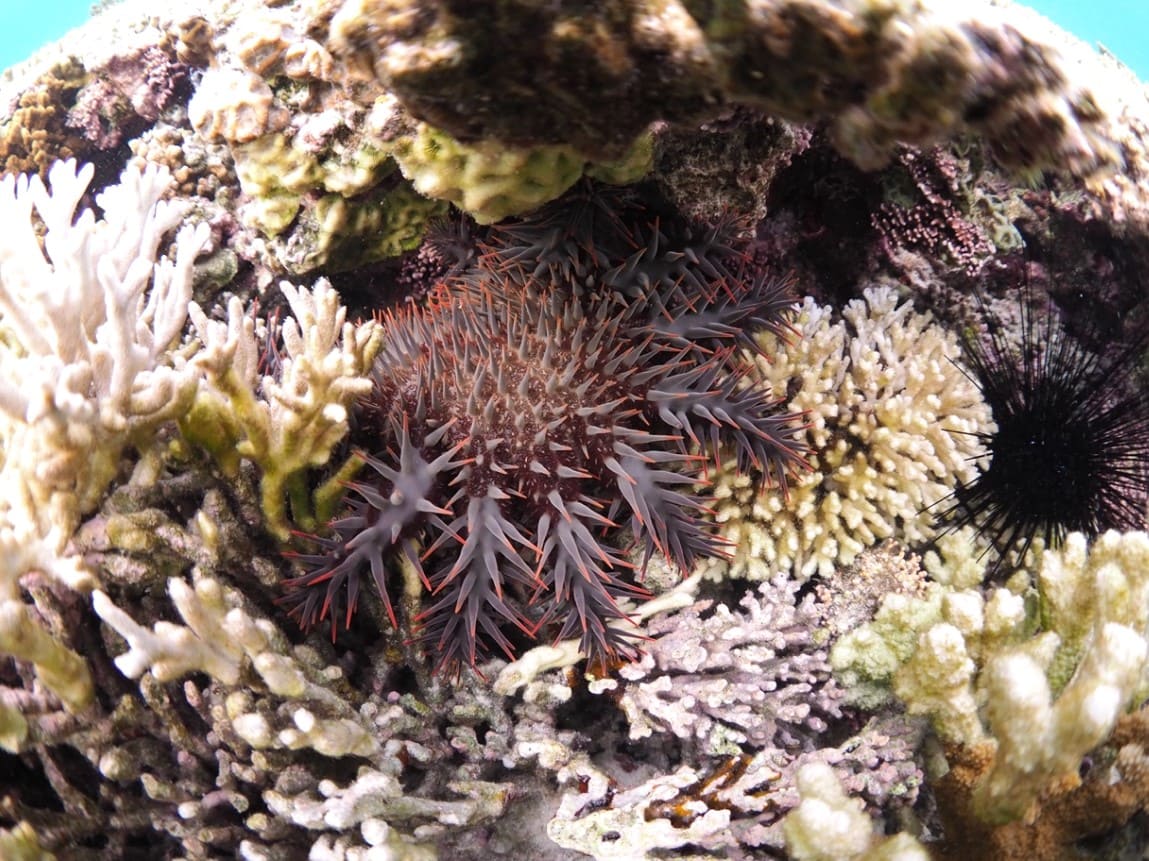 Pictured: A crown-of-thorns starfish in the lagoon, sitting atop white coral that it has recently eaten. These starfish tend to hide under ledges during the day and feed at night. To the right of the starfish is a Diadema sea urchin.
Pictured: A crown-of-thorns starfish in the lagoon, sitting atop white coral that it has recently eaten. These starfish tend to hide under ledges during the day and feed at night. To the right of the starfish is a Diadema sea urchin.
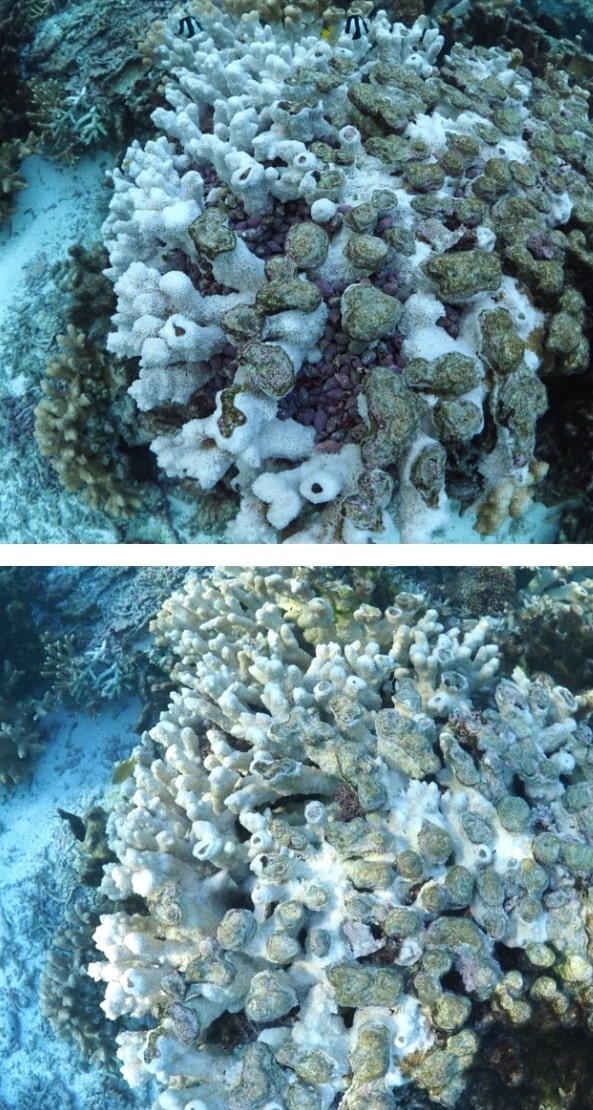
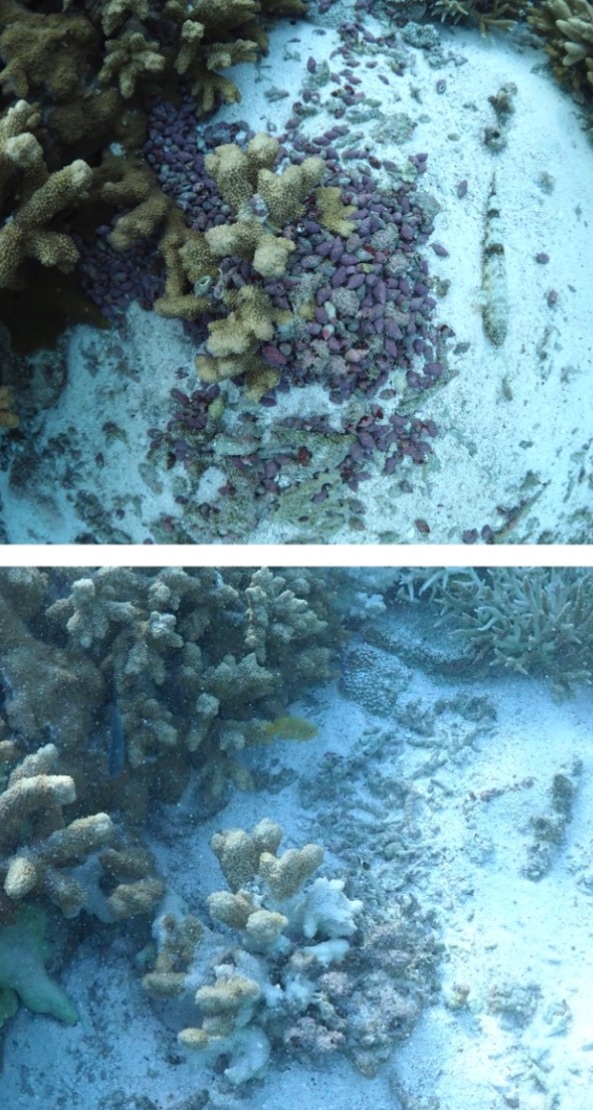
How are we managing these two species?
The first step of the process is surveying the reef – a critical component of this work. Our team undertakes a variety of surveys including a Tourism Weekly Survey and a Reef Health and Impact Survey (RHIS). The tourism weekly survey acts as an early warning system for any slight changes from week to week on the reef. These surveys are conducted in the same locations every week, with sites including Second Reef and the Lagoon, sites we are extremely familiar with. We are looking at the numbers of important and iconic reef species, the presence of reef predators and any recent damage to the reef from human and non-human impacts. RHIS surveys are a categorical breakdown of coral cover and benthos, plus any recent impacts on the reef. These surveys aid in decision making for COTS and Drupella control and identify exactly where we need to be focusing our efforts.
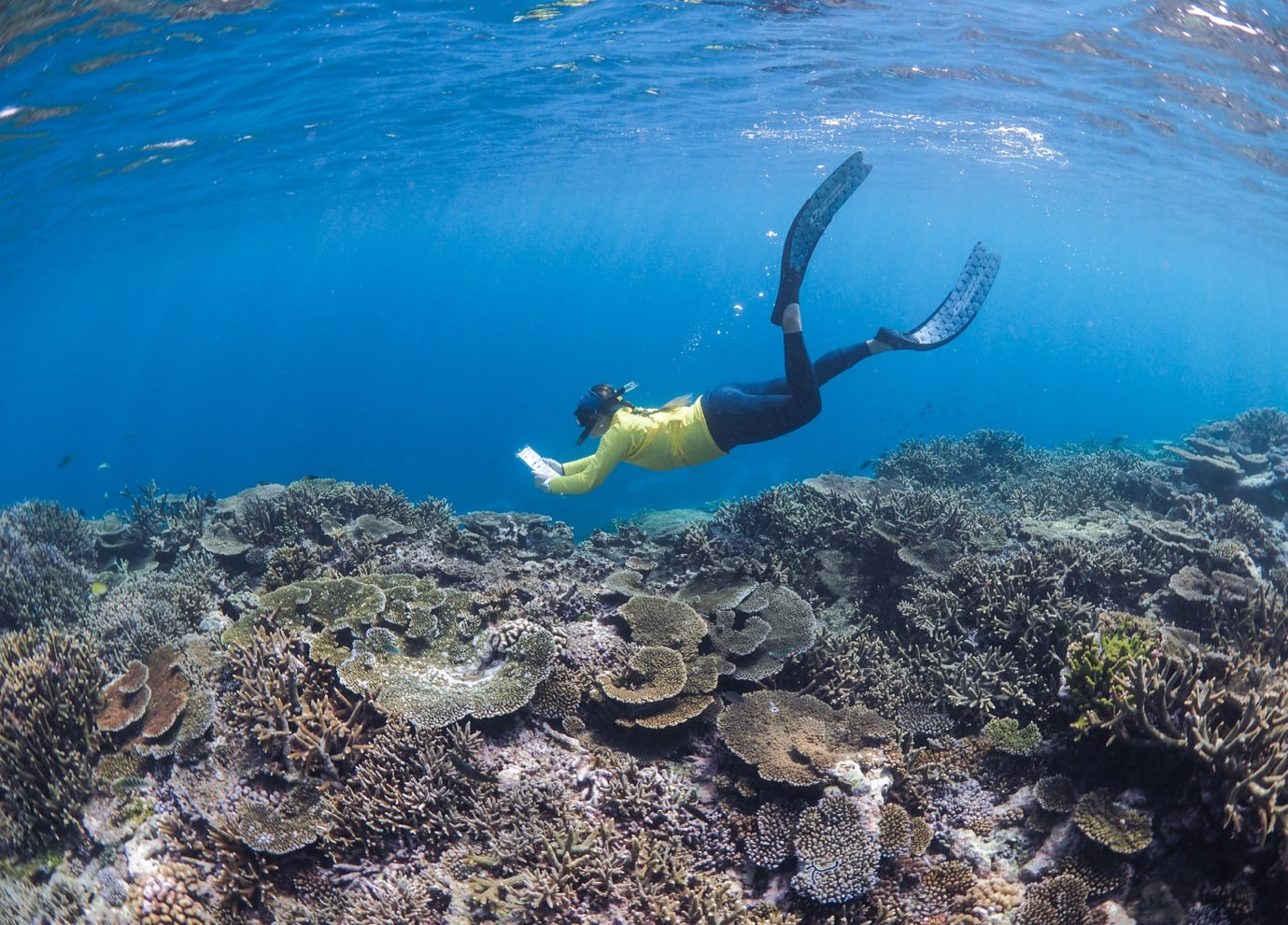 Pictured: Jessica Blackmore conducting a Tourism Weekly Survey at the Second Reef site.
Pictured: Jessica Blackmore conducting a Tourism Weekly Survey at the Second Reef site.
“In the last six months, we have removed 30,033 Drupella snails from an outbreak area of roughly 400m2 in the lagoon” – Environmental Education Officer and Master Reef Guide Jessica Blackmore
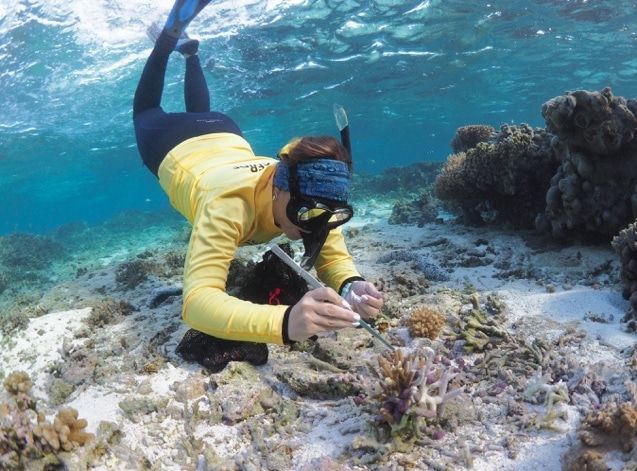
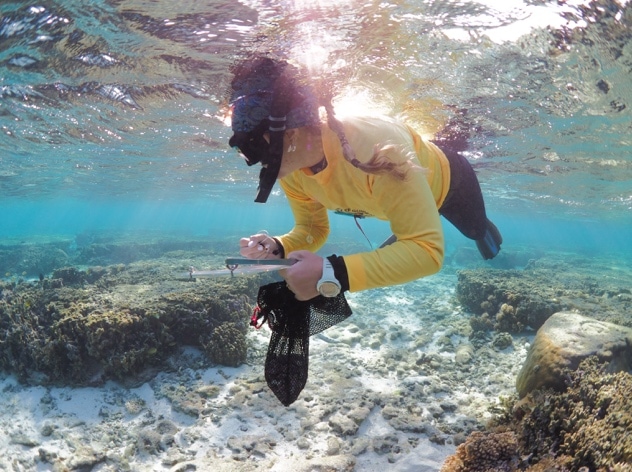
For COTS control, we send out a team of scuba divers, two of whom are equipped with a container of household vinegar, attached to an applicator. The team dives different areas of the reef in search of tell-tale signs of the starfish which include a stark white colouration on the coral, we call this a “COTS scar” from where a starfish has recently been feeding. Once the starfish is located, it is injected at the base of the arm with vinegar. In the case of larger individuals, they may require two doses of the vinegar, and over 48 hours the starfish will break down and often become a meal for other reef inhabitants. The Great Barrier Reef Marine Park Authority has developed a framework for COTS with aims below;
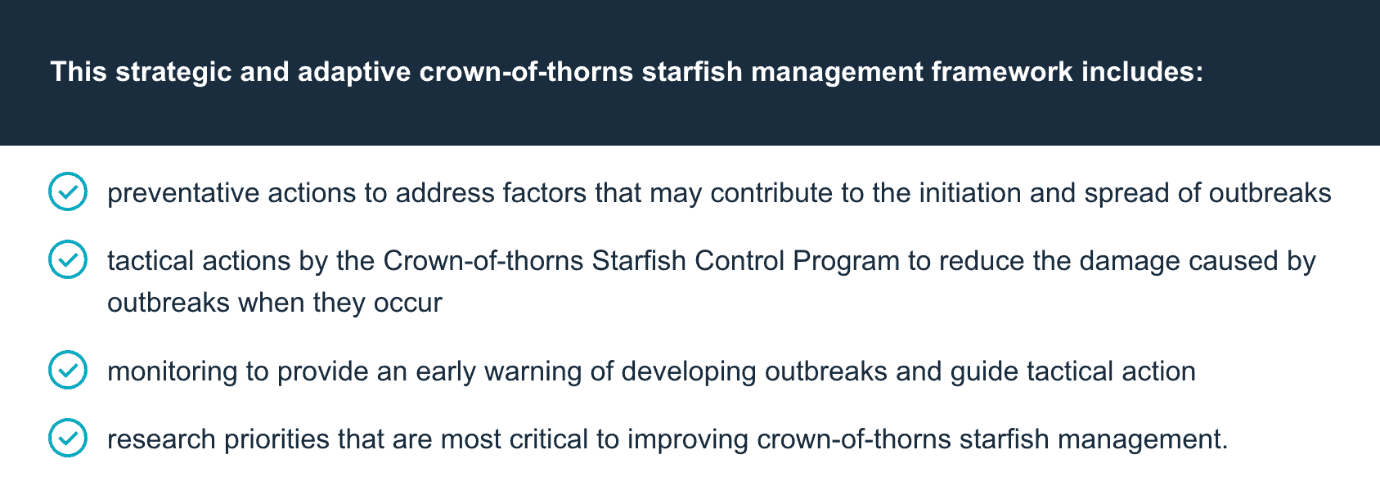
“392 Crown of thorns starfish have been removed from the reef around Lady Elliot Island in the past 6 months and we feel we are making great progress in controlling this species” – Jessica Blackmore
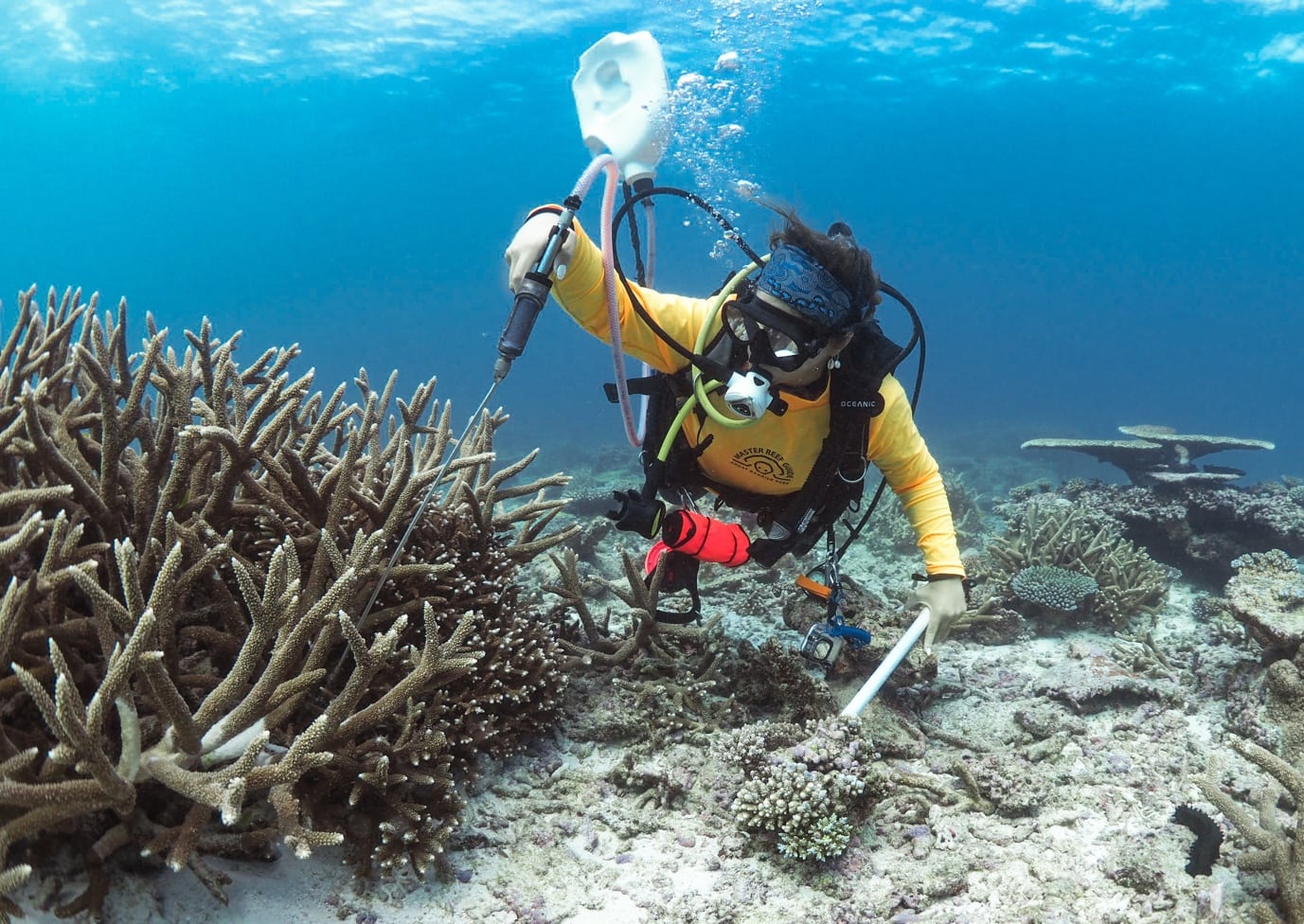 Pictured: Jessica Blackmore injecting a COTS with vinegar, note the white scarring at the base of this branching coral colony leading the divers to the starfish.
Pictured: Jessica Blackmore injecting a COTS with vinegar, note the white scarring at the base of this branching coral colony leading the divers to the starfish.
What is the Tourism Reef Protection Initiative?
The overall goals of this program include:
- Development of Site Stewardship Plans.
- High frequency reef health surveys and monitoring actions at stewardship sites.
- Crown-of-thorns starfish control.
- Drupella snail removal.
- Facilitation of on-country visits for Traditional Owners.
- Experience development and implementation of reef education and interpretation programs that focus on the values of the Great Barrier Reef World Heritage Area.
- Permitted assisted recovery and site-intervention activities.
Through this program we have been able to make so much more of an impact with funding from the GBRMPA Tourism Reef Protection Initiative. This initiative has allowed us to spend so much more time actually out on the water, and in the last 6 months we have completed over 150 surveys and removed an astounding number of pest species” – Jessica Blackmore
Images and Footage: Copyright Commonwealth of Australia (GBRMPA), Produced by Jacinta Shackleton [Lady Elliot Island Eco Resort]
The Tourism Reef Protection Initiative is funded by the Great Barrier Reef Marine Park Authority as part of the Australian Government’s Reef Protection package.
References:

 Snorkel & Dive
Snorkel & Dive Sustainability
Sustainability